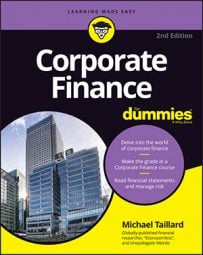According to modern portfolio theory, there’s a trade-off between risk and return. All other factors being equal, if a particular investment incurs a higher risk of financial loss for prospective investors, those investors must be able to expect a higher return in order to be attracted to the higher risk.
Be very careful in your interpretation of the preceding paragraph, because perception can be misleading. Just because an investor believes that a higher-risk investment will generate higher returns doesn’t necessarily make it true.
Sometimes higher-risk investments become less risky over time, attracting more investors who then drive up the price/value of the investment by competitively outbidding each other. (A larger pool of investors tends to mean a higher price.)
In the vast majority of cases, though, there is no promise of higher returns on risky assets, so the higher risk just tends to scare off potential investors, keeping the returns on a given investment low. The only investments that can really try to promise higher returns for higher risk are bonds, and even then the higher returns won’t be generated if the issuing organization goes into default.
Whether or not a riskier investment will actually generate higher returns is up to the individual investor to decide.
Exactly how risk is assessed and the amount of expected returns change depending on the individual investor.
Investors will, in fact, invest in higher-risk opportunities if they determine that doing so will generate higher returns.
The point is that a corporation won’t buy into a higher-risk investment if it doesn’t think the investment will generate extra returns. The fact that so many high-risk investments do attract investors obviously indicates that there’s some perception of higher expected returns.
Here’s an important but subtle difference: Higher risk doesn’t necessarily mean higher returns, but only those investments that are expected to provide higher returns will attract investors. If the risk is too high without the expectation of additional returns, no one will buy the investment.
It’s worth noting that the preceding discussion is all about the amount of risk in an individual investment. That risk can be mitigated by choosing the proper combination of investments.

